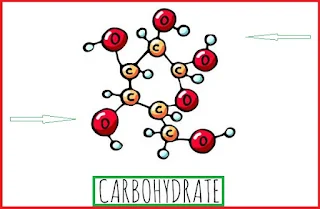Biochemistry is the branch of chemistry that deals with the chemical processes occurring in living organisms. The different compounds in living organisms are 1. Carbohydrates 2. Proteins 3. Lipids 4. Vitamins 5. Enzymes.
What is the Carbohydrates?
Carbohydrates are defined as polyhydroxy aldehydes or polyhydroxy ketone or the molecules that yield these compounds on hydrolysis. Explanation- Carbohydrates are naturally occurring Organic compounds that occur mostly in plants however animals also contain a small amount of carbohydrates. 80% of the dry mass of carbohydrates while 1% of the mass of animals is due to carbohydrates.
Carbohydrates provide energy to plants and animals but in plants, they are also structural materials which means that plants are made up of carbohydrates.
Sources of carbohydrates
Carbohydrate Source
Glucose Grape, Sugar
Fructose Honey, Sugar
Starch Potatoes
Cellulose Wood
Glycogen Liver
Chemical Composition of Carbohydrates
Most carbohydrates have a general formula Cn (H2O)n. For example, glucose Ca(h2o)6. But some carbohydrates do not obey this formula. For example- 2-deoxyribose with a chemical formula of C5H10O4.
Classification of Carbohydrates
Based on several simple sugar units present per molecule, carbohydrates are divided into three major classes these are.
(I) Monosaccharides
They are also called simple sugars. They contain only one sugar unit per molecule. They cant be broken down into more simple carbohydrates on hydrolysis. Exp. Glucose, Fructose
Subdivision of Monosaccharides:- The monosaccharides are again subdivided based on the type of functional group and the number of carbon atoms in molecules. Based on the type of functional group monosaccharides may be classified as Ketoses and Aliases.
Ketoses:- Ketoses are those monosaccharides that contain the functional group of ketones like fructose.
Aldoses:- Aldoses are those monosaccharides that contain the functional group of aldehyde-like glucose. Monosaccharides can also be divided based on the number of carbon atoms in the molecules.
For Example- Trioses, Tetroses, Pentoses, Hexoses, etc. Which contains 3,4,5 and 6 carbon atoms respectively.
(II) Oligosaccharides
These are those carbohydrates that contain 2-10 units of monosaccharides or simple units of monosaccharides or simple units per molecule.
Explanation:- Every oligosaccharide was broken down into two to ten simple carbohydrates or monosaccharides upon acid hydrolysis. They can be further divided into disaccharides, trisaccharides, and tetrasaccharides respectively.
Di-saccharides:- They produce two monosaccharide molecules upon acidic hydrolysis e.g. Maltose.
Tri-saccharides:- They produce three monosaccharide molecules upon acidic hydrolysis e.g. Raffinose. Upon hydrolysis produce a similar or different type of monosaccharides.
For Example:- maltose produces the same kind of two glucose units upon hydrolysis
C12H22O11+H2O -----------------> 2C4H12O6
Sucrose produces two different types of monosaccharides e.g. Glucose and fructose upon hydrolysis.
C12H22O11+H2O ------------H+-----------> C6H12O6+C6H12O6
Glycoside Linkage or Bond
A glycoside link is an ether functional group formed when two monosaccharide molecules react to produce a disaccharide.
Explanation:- During the reaction of two monosaccharide molecules, hydrogen atoms from one molecule and hydroxyl group form another molecule react they produce maltose through the formation of a glycoside link.
(III) Polysaccharides
Polysaccharides are those carbohydrates that contain more than 10 monosaccharides per unit per molecule.
Explanation:- Polysaccharides are the bio-polymers of monosaccharides upon acid hydrolysis they produce more than 10 monosaccharide molecules. EXP.
(C6 H10 O5)n + nH2O --------H+-------> C6H12O6
Function of Carbohydrates | Carbohydrates Used
The basic function of carbohydrates is the production of energy for the performance of vital activities in living organisms. Carbohydrates are also known as the fuel of life. They produce energy by the process of oxidation.
Carbohydrate + O2 -------------------------> CO2+H2O+ Energy
Sources of Energy
(i) Glucose:- Glucose is used as an immediate source of energy for sick and sportsmen. It is also used in the manufacture of jams and sweets.
(ii) Fructose:- Fructose is used as a sweetening agent in confectionery in medical syrup. It is also used to prevent sandiness in ice cream. It is also used as a substitute for table sugar for the obese and diabetic.
(iii) Sucrose:- Sucrose is used as a food and ingredient of lams, jellies, confectioneries, and syrup. It is also used in the preparation of sucrose octa-acetate which is used for the denaturation of alcohols and for making anhydrous adhesive.
(iv) Starch:- Starch is principally used as a food. It is industrially used for the manufacturing of ethanol by the process of fermentation. It is also used as a stiffening agent in the textile industry and in laundry. It is also used as an adhesive to fasten paper.
(v) Cellulose:- Cellulose has no food value but it is used as a roughage in our diet for promoting the peristaltic motion of the digestive tract. It is used for the manufacturing of paper.
(vi) Receptors on cell membranes:- The receptors on the cell membranes are the complexes of carbohydrates with certain proteins. The receptors are involved in molecular targeting or molecular recognition.
(vii) Derivatives of Carbohydrates:- The derivatives of carbohydrates such as protein glycol heparin sulfate are involved in the attachment or adhesion of neurons to one another during the development of the nervous system.
Role of Various Carbohydrates in Heath & Diseases
The are different types of carbohydrates that are involved in the health and disease of living beings some of these are given as under.
Sucrose:- Sucrose has been a disaccharide for a long, it has been used as a sweetening agent and as a source of production of energy for living organisms.
Negative health Effects: The use of sucrose is the primary cause of tooth decay and obesity.





